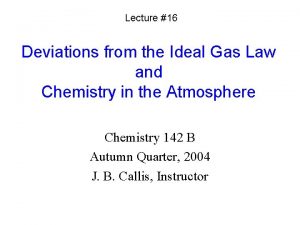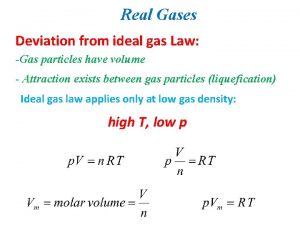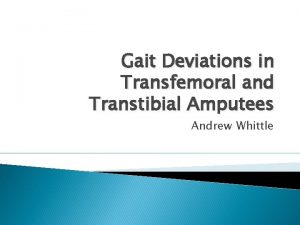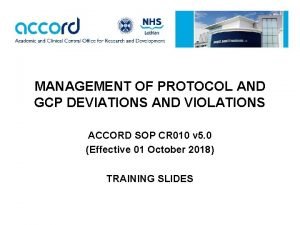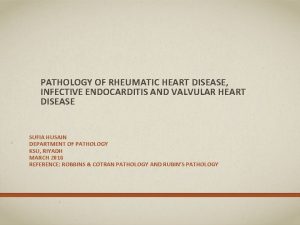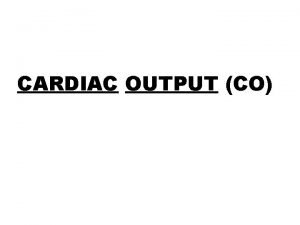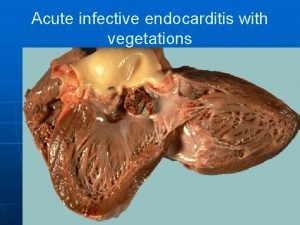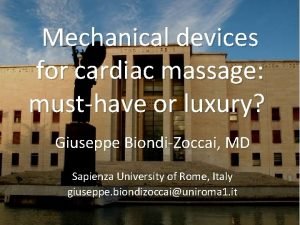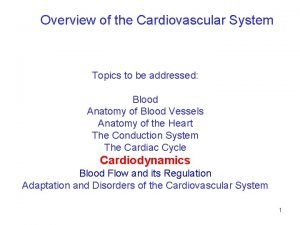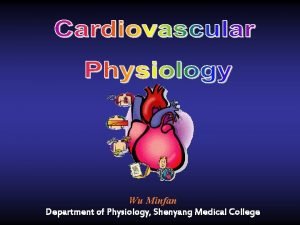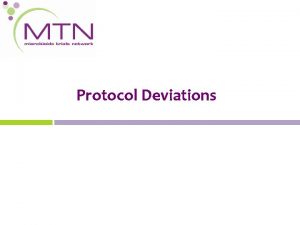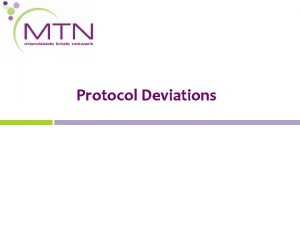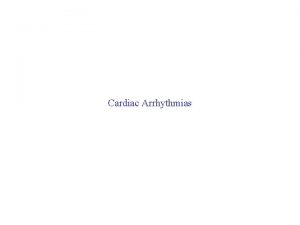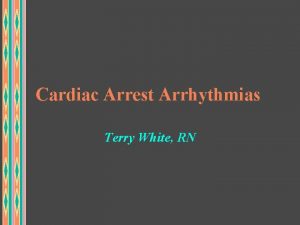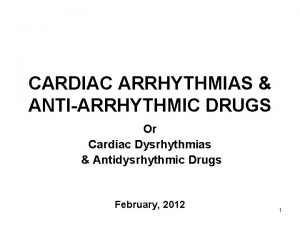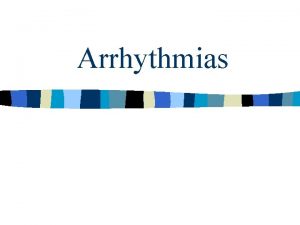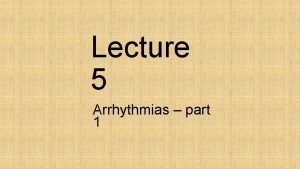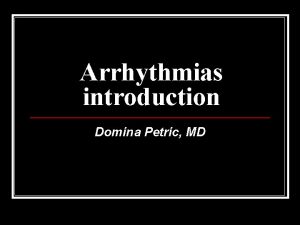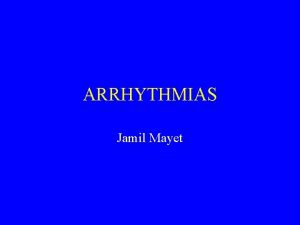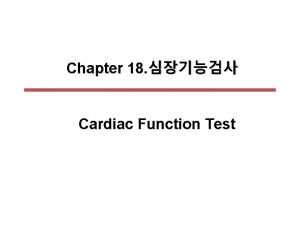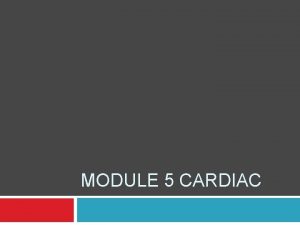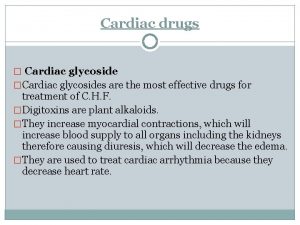Cardiac Arrhythmias Definition Cardiac arrhythmias are deviations from













- Slides: 13

Cardiac Arrhythmias

Definition. Cardiac arrhythmias are deviations from the normal heartbeat pattern. they include abnormalities of impulse format ion, such as heart rate, rhythm, or site of impulse origin, and conduction disturbances, which disrupt the normal sequence of atrial and ventricular activation.

Classification. Tachyarrhythmia. (increase in the pulse ) Bradyarrhythmia(decrease in the pulse ) Diagnostic test results: an ECG can identify a specific arrhythmia

THERAPY Class IA (antiarrhythmic): Quinidine. Procainamide 1 - Prevent supraventricular tachycardia (SVT)( the abnormally fast heart rhythm arising from improper electrical activity in upper part of the heart 2 - Preventricular tachycardia. ( abnormal heart rate. It starts in your heart's lower chambers, called the ventricles) Adverse Reaction : Allergic reaction , Nausea , Vomiting , Cardiac Arrest the

THERAPY Class IB drugs: Lidocaine: is used therapeutically for treat ventricular tachycardia Phenytoin: is most commonly used to treat digitalis- induced ventricular and supraventricular arrhythmias. Class IC Drugs Flecainide : suppresses ventricular tachycardia. Adverse reaction to IB and IC Cardiac arrest , hypotension if taken by IV

THERAPY Class II antiarrhythmic : (β- blockers): they are used mainly to treat systemic hypertension. among the drugs in this class. Example Propranolol , Sotalol , are approved for antiarrhythmic use. To control supraventricular arrhythmias adverse affect : asthmatic attack , drowsiness , allergy reported

THERAPY Class III Antiarrhythmics : Amiodarone : treatment of ventricular fibrillation and pulseless ventricular tachycardia. Adverse reaction : Nausea , skin disorder. Class IV antiarrhythmic: Calcium-channel blockers: Verapamil, rapidly control the ventricular response to atrial flutter and fibrillation. Effect heart more the blood vessels Averse reaction : Hypotension , Constipation

Angina

Definition Heart muscles get its blood supply from Aorta via coronary Arteries. When ever there is increase in Oxygen demand the blood supply reduce pain in the chest is occurs is called angina.

Treatment We use to treat Angina : 1 - Direct Vasodilators (Nitrites ). 2 - β Blockers (Propranolol ). 3 - Calcium Channel Blocker (Verapamil).

1 - Direct Vasodilators (Nitrites ) This drug used to treat : 1 - Angina 2 - Heart Failure Adverse reaction : Tolerance , Headache , Fall in the blood pressure. 2 - β Blockers (propranolol ). 1 - Decrease the Oxygen demands of the heart 2 - Decrease the anxiety or excitement in the heart Adverse Reaction : Hypotension , Bronchospasm

Calcium Channel Blockers ( Verapamil ) 1 - Treat systemic Hypertension 2 - Treat Migraine Averse reaction : Allergic Reaction Reported Liver Damage

Summary Heart has three main problems to deal with : 1 - Heart Failure 2 - Arrhythmias 3 - Angina the drugs that used to treat these problems are 1 - Digitals 2 - Diuretics 3 - Β Blockers 4 - Calcium Channel Blockers 5 - Vasodilators
 Insidan region jh
Insidan region jh Deviations from ideal gas law
Deviations from ideal gas law Deviations from ideal gas law
Deviations from ideal gas law What is the mean absolute deviation of the data set
What is the mean absolute deviation of the data set Vaulting gait
Vaulting gait Protocol deviations categories
Protocol deviations categories Protocol deviations gcp
Protocol deviations gcp Jones criteria
Jones criteria Cardiac output fick principle
Cardiac output fick principle Cardiac vegetation definition
Cardiac vegetation definition Cardiac massage definition
Cardiac massage definition Types of bed positioning for patients
Types of bed positioning for patients Factors regulating cardiac output
Factors regulating cardiac output Homometric regulation of cardiac output
Homometric regulation of cardiac output

